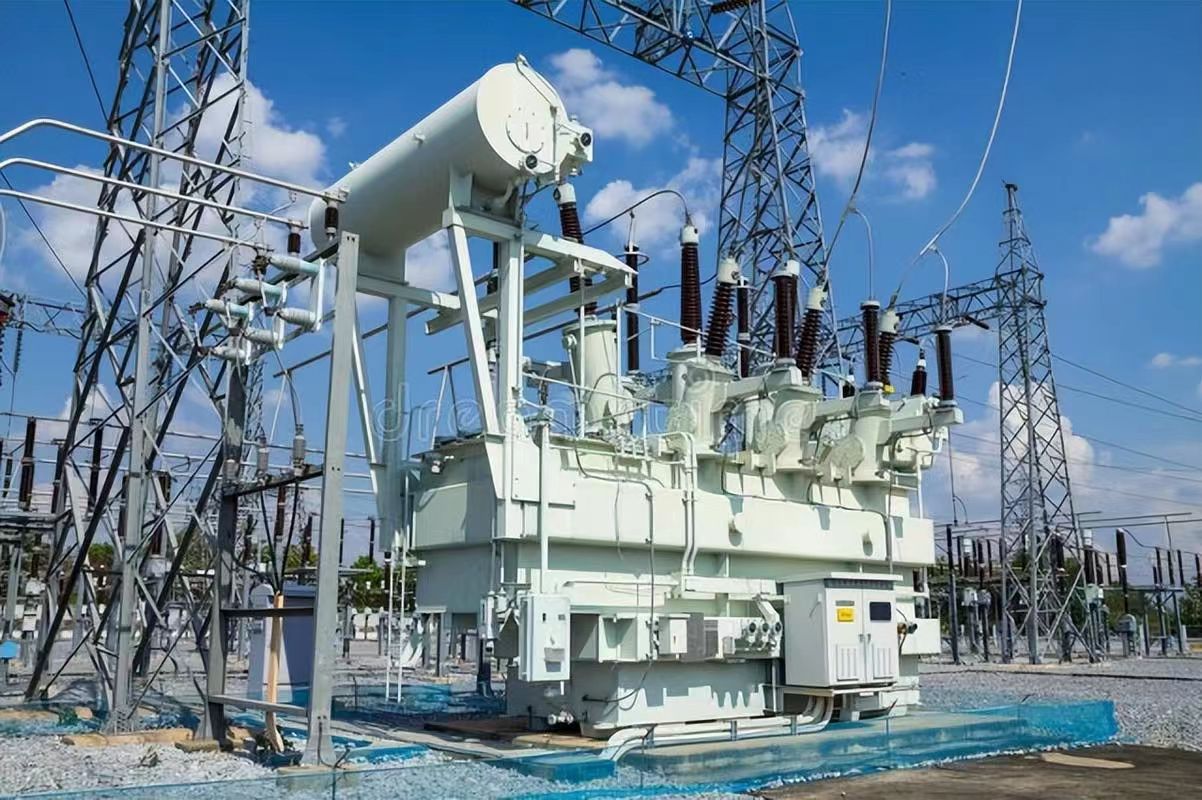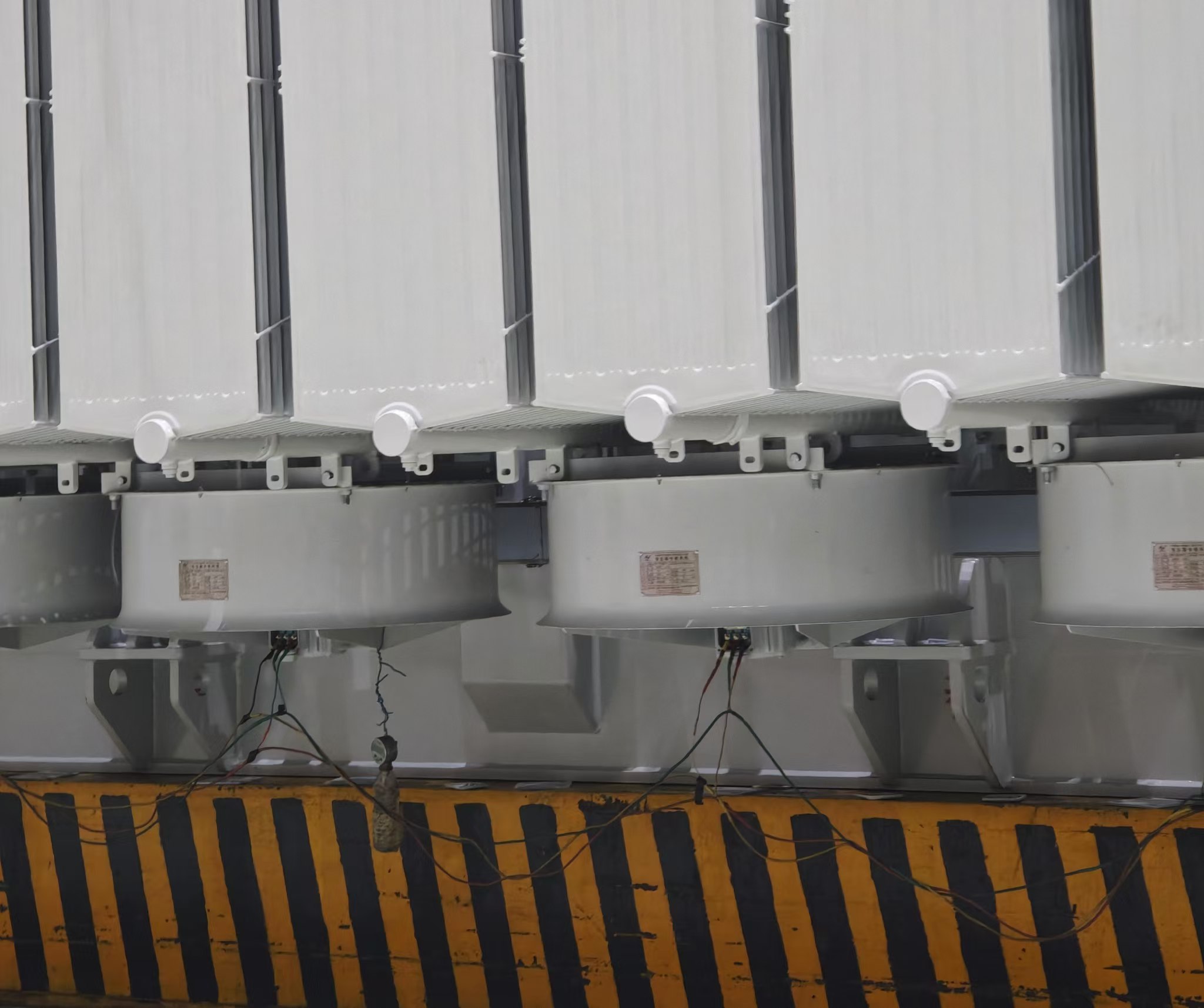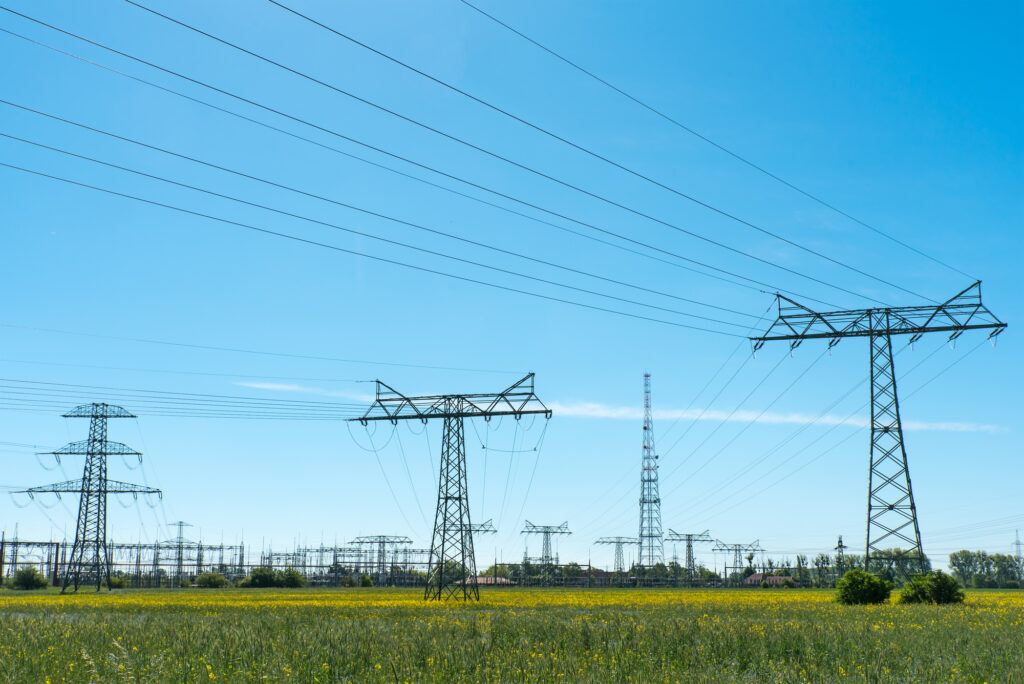The capacity calculation of a transformer is a critical step in ensuring that the power system operates efficiently, reliably, and safely. Transformers are fundamental components of electrical grids, responsible for stepping up or stepping down voltages and managing power distribution. To ensure that a transformer meets both current and future demand, it’s essential to take into account several key factors that influence its performance. From load demand to cooling systems, these considerations play a significant role in determining the correct transformer size and type for a specific application. This article explores the crucial factors that engineers and designers must consider when calculating transformer capacity.
What is the Importance of Accurate Transformer Capacity Calculation?

Accurately calculating transformer capacity is crucial to ensuring that the transformer can handle the electrical load requirements of a system while maintaining efficiency, reliability, and safety. Improper transformer sizing can result in overloading, inefficiency, or inadequate power delivery, all of which can lead to premature failure, increased maintenance costs, and downtime. Therefore, understanding the key factors involved in transformer capacity calculation and making precise assessments is essential for optimizing electrical power systems.
Ensures Optimal Performance
An accurately sized transformer ensures that the system can operate at its full potential without overloading or operating inefficiently. A transformer that is too small for the intended load may result in overloading, while an oversized transformer can lead to inefficiencies, excessive losses, and higher costs. By accurately calculating the required transformer capacity, you ensure that the system operates smoothly and efficiently.
Enhances Safety and Reliability
Incorrect transformer sizing can pose significant safety risks. If a transformer is under-rated and subjected to higher loads than it is designed to handle, it may overheat, causing potential failures, fires, or even explosions. On the other hand, oversized transformers might operate with lower efficiency, potentially leading to equipment damage. Proper transformer capacity calculation allows for the selection of a transformer that provides the right balance of load-handling capability, ensuring the system remains reliable and safe for use.
Cost Efficiency
Calculating the right transformer capacity helps in managing upfront costs as well as long-term operational costs. Over-sizing a transformer can lead to higher initial costs and greater operational expenses due to inefficiencies, while under-sizing a transformer can result in higher maintenance costs and shortened lifespan. Accurate calculation ensures that the transformer is neither over- nor under-sized, optimizing both capital expenditure and operating costs.
Supporting Future Growth
One of the most important aspects of transformer capacity calculation is to account for future load growth. Power demand tends to increase over time due to various factors such as population growth, industrial expansion, or changes in load characteristics. A transformer that has been properly sized for current and future needs will reduce the need for upgrades or replacements, making it a more cost-effective solution in the long term.
Avoids Unnecessary Maintenance and Downtime
A transformer operating below its optimal capacity or frequently running at maximum load can result in frequent breakdowns, higher maintenance needs, and ultimately, reduced system reliability. An accurately sized transformer operates at a safe load level, leading to less wear and tear, lower maintenance requirements, and a longer operational life, minimizing downtime and unexpected repairs.
How Does Load Demand Impact Transformer Capacity?
In the context of electrical power distribution, load demand refers to the amount of electrical power or current required by consumers at any given time. It plays a crucial role in determining the capacity of transformers, as these components are responsible for transferring electrical power from one voltage level to another while maintaining stability, efficiency, and safety.
The Link Between Load Demand and Transformer Capacity
Transformer capacity is the maximum electrical load the transformer can handle without overheating, malfunctioning, or causing other failures in the power distribution system. Load demand directly influences how much power a transformer needs to supply, and thus, impacts the selection and operational parameters of the transformer.
The key relationship can be summarized as follows:
- Overloading Risk: If the transformer is sized below the expected load demand, it may become overloaded, leading to overheating, insulation degradation, and potential damage. Overloading can shorten the transformer’s lifespan and increase maintenance costs.
- Underloading: On the other hand, choosing a transformer with too much capacity for the current load demand can lead to inefficient operation, as transformers consume power even when they aren’t fully loaded. This can increase operational costs due to energy losses like core losses and no-load losses.
How Load Demand Affects Transformer Design
The design and rating of a transformer are influenced by the peak load demand in the system. These demands are taken into account in the following ways:
- Peak Load Demand: Transformers are typically sized to accommodate peak load conditions — the maximum electrical demand expected within a specific period. This ensures the transformer can handle any surge in load without compromising system stability.
- Load Factor: The average load demand over a certain period is another important consideration. Load factor is the ratio of the average load to the peak load. A higher load factor means the transformer can be optimized for higher capacity without significant risk of overloading.
- Capacity Margin: Transformers are often designed with a capacity margin that allows them to accommodate unexpected load increases, such as when there’s a rise in demand or a change in the load profile. This margin ensures that the transformer won’t operate at full capacity all the time, improving its efficiency and lifespan.
How to Adjust Transformer Capacity for Load Demand Fluctuations
Load demand is rarely static, especially in industries, residential areas, or growing urban environments where energy consumption patterns fluctuate. Here are strategies to ensure transformers are well-matched to varying load demands:
- Load Forecasting: Accurate forecasting is crucial to predict future load requirements based on historical data, trends, and expected growth. This helps utilities and organizations select the right transformer size.
- Dynamic Load Management: Technologies like smart grids and load management systems can help adjust power distribution to align with real-time load fluctuations. For example, transformers might be connected in parallel with other transformers to share the load efficiently during peak demand times.
- Step Load Capability: Some transformers are designed with tap-changing mechanisms to adjust to changes in load demand dynamically. These on-load tap changers enable the transformer to regulate voltage within acceptable limits, depending on the load demand.
Transformer Sizing and Load Demand Planning
In planning for transformer capacity, the following considerations are crucial:
- Long-Term Load Projections: Analyzing the load demand over the next 5-10 years can help in determining the transformer size. This is particularly important in rapidly growing areas or industries where demand may increase significantly.
- Reliability and Safety Standards: Transformers must be sized and rated not only for current demand but also with enough margin to account for faults or unexpected load spikes. This ensures that the system remains operational and safe, even during abnormal conditions.
What Role Do Voltage Ratings Play in Transformer Capacity?
Transformers are crucial in ensuring that electrical energy is transmitted efficiently across long distances and distributed to consumers at the correct voltage levels. One of the key parameters when selecting and designing a transformer is its voltage rating, which directly influences its capacity and overall performance. In this article, we'll explore how voltage ratings impact transformer capacity, and why they are so critical in transformer design and operation.
Understanding Voltage Ratings in Transformers
The voltage rating of a transformer refers to the nominal operating voltage of both its primary (input) and secondary (output) windings. Essentially, this rating indicates the maximum voltage the transformer can safely handle without risk of breakdown or damage to its insulation. Voltage ratings are expressed in volts (V) and are typically specified for both the primary and secondary windings, with a ratio between them indicating the transformer’s voltage step-up or step-down capabilities.
Primary Voltage Rating
This is the voltage that is supplied to the primary winding of the transformer. The primary voltage determines how much electrical potential is applied to the transformer’s core, which induces a magnetic field to transform energy. If the primary voltage is too high for the transformer’s rating, it could cause excessive heat generation, insulation breakdown, or even failure of the transformer.
Secondary Voltage Rating
This refers to the voltage output from the secondary winding. Depending on the application, the secondary voltage may be higher or lower than the primary voltage. For instance, in power distribution systems, a transformer steps down high transmission voltages to lower, usable levels suitable for households and industries. The secondary voltage needs to match the voltage requirements of the load (such as a piece of machinery or a household circuit) for proper functionality and safety.
Impact of Voltage Ratings on Transformer Capacity
- Voltage Ratio and Current Flow
The voltage rating determines the ratio between the primary and secondary windings. The voltage ratio directly impacts the current flow. For instance, when a transformer steps down voltage (e.g., from 11 kV to 400 V), the current in the secondary winding increases in proportion to the ratio. Transformer capacity is often defined by the amount of current that it can safely handle at a given voltage. When designing a transformer, the current that flows through the windings must be within safe limits to prevent overheating and ensure reliable operation.
- Maximum Power Capacity (kVA Rating)
Transformer capacity is usually measured in kilovolt-amperes (kVA), which indicates the maximum apparent power it can handle. The formula for calculating the kVA of a transformer is:
[\text{kVA} = \frac{\text{Voltage} \times \text{Current}}{1000}]
For both the primary and secondary windings, voltage ratings are used to determine the transformer’s ability to handle a given load. A higher voltage rating typically leads to a higher kVA capacity, meaning the transformer can supply more power. If the voltage is too low, the transformer will need to handle higher currents to deliver the same power, which can affect the design and operational efficiency.
- Voltage Ratings and Insulation Standards
Each transformer has an insulation system rated for specific voltages. The insulation material used in a transformer must be able to withstand the electrical stress placed on it by the voltage applied. Voltage ratings determine the design class of the insulation system, which in turn impacts the transformer's overall capacity. The insulation system prevents arcing or breakdowns due to high voltages, ensuring that the transformer operates safely within its voltage rating.
- Load Matching
For a transformer to operate at its optimal capacity, the load it serves should match the secondary voltage rating. If the transformer is undersized or oversized relative to the load voltage requirements, it will either underperform or overheat. Proper voltage matching is essential for maintaining transformer efficiency and longevity, as well as preventing unnecessary energy losses.
- Short-Circuit Protection
The voltage rating also plays a role in the short-circuit impedance of the transformer. Short-circuit impedance helps limit the fault currents that can cause damage to the transformer. High voltage ratings can lead to higher fault current values, so the transformer design must accommodate these by selecting appropriate protection devices, like circuit breakers and fuses, that can react to sudden surges in voltage.
How Do Temperature and Cooling Systems Affect Transformer Size?

Transformers are essential components in power distribution and electrical systems, converting voltage levels to suit the needs of various applications. The performance, size, and efficiency of a transformer are influenced by several factors, and one of the most critical factors is temperature and the cooling system used. In this article, we will explore how temperature and cooling systems affect transformer size, including how proper cooling can improve efficiency, extend lifespan, and prevent operational failure.
The Importance of Temperature Management in Transformers
Transformers generate heat during operation due to electrical losses in the core and windings. This heat must be managed effectively to ensure the transformer operates within safe temperature limits. Excessive heat can damage insulation, reduce efficiency, and ultimately lead to transformer failure.
Heat is generated primarily due to two types of losses in a transformer:
- Core Losses: These occur due to hysteresis and eddy currents in the transformer core, typically associated with the magnetic field.
- Copper Losses: These occur due to the resistance in the windings (both primary and secondary), causing energy loss as heat.
For optimal performance and longevity, a transformer must dissipate this heat. If the heat is not effectively removed, the transformer’s insulation can break down, resulting in short circuits, insulation failure, and a significantly reduced lifespan.
Cooling Systems and Their Role in Transformer Design
The cooling system of a transformer is designed to maintain safe operational temperatures, prevent overheating, and improve overall efficiency. There are several cooling methods used in transformers:
-
Air Cooling (ONAN - Oil Natural Air Natural):
- This is the most basic form of cooling, where natural convection of air helps cool the oil inside the transformer tank.
- It is suitable for small to medium-sized transformers and is commonly used for indoor or low-power applications.
- However, air cooling is limited in its ability to manage high temperatures, making it less effective for larger transformers or those handling high load demands.
-
Oil Cooling (ONAF - Oil Natural Air Forced):
- This method uses natural convection of oil along with forced air (via fans) to enhance heat dissipation.
- This system is often used in medium to large transformers, where there is a need for more effective cooling.
-
Forced Oil Cooling (OFAF - Oil Forced Air Forced):
- In this setup, both the oil and air are pumped or forced through the system to achieve higher cooling efficiency.
- This is typically used for high-capacity transformers that handle large loads or are installed in high-temperature environments.
-
Water Cooling:
- Water cooling systems are used in extremely high-power transformers where both oil and air cooling systems are insufficient. Water is pumped around the transformer to absorb heat and carry it away.
- This system is common in industrial applications or utilities where a higher level of heat management is required.
How Cooling Affects Transformer Size
The design and size of a transformer are closely tied to the cooling system used. The more heat a transformer needs to dissipate, the more extensive and powerful the cooling system must be. A larger cooling system increases the overall size of the transformer.
1. Cooling System Capacity:
The cooling system’s capacity to remove heat directly affects the transformer’s size. For example:
- A larger cooling system means more space is needed for components such as fans, heat exchangers, or water circulation systems.
- Forced cooling (either air or oil) increases the transformer size compared to natural cooling, as the transformers require additional components like pumps, fans, or ducts to circulate air or oil.
2. Insulation and Safety:
More powerful cooling systems allow the transformer to operate at higher power ratings without overheating. As a result, transformers with robust cooling systems can handle higher voltages and larger currents, which may require larger tank sizes or specialized cooling ducts.
3. Efficiency Considerations:
Efficient cooling means that transformers can operate at higher capacities for longer periods without exceeding thermal limits. A cooling system that is not up to the task of removing heat efficiently can lead to reduced efficiency, shorter service life, and the need for larger transformers to meet the same operational demands.
Impact of Temperature on Transformer Size
Temperature directly affects transformer design:
- Hotter environments require transformers to be built with larger tanks or more sophisticated cooling methods to prevent overheating.
- Ambient temperature plays a significant role in transformer sizing. In colder climates, transformers might need less cooling capacity, while in hotter climates, cooling solutions must be enhanced to maintain operational stability.
The core material and winding resistance are also dependent on temperature. As the temperature increases, the resistance of the windings increases, which leads to higher copper losses. To mitigate these losses and maintain efficiency, a larger transformer with enhanced cooling may be required.
The Relationship Between Load and Cooling
Transformer size and cooling capacity are also impacted by load demands:
- Higher Load: When transformers are subjected to high loads or peak demand, they generate more heat due to increased copper losses. To avoid overheating under these conditions, the transformer’s cooling system needs to be scaled accordingly.
- Variable Load: Transformers operating under variable load conditions may require more flexible or adaptive cooling solutions, such as fans or pumps that can adjust to the heat generation dynamically.
What Is the Role of Efficiency and Losses in Transformer Capacity?

When selecting or designing a transformer, efficiency and losses are critical factors that directly influence its capacity, performance, and operational costs. Understanding the interplay between efficiency and losses is essential for ensuring that a transformer operates at optimal performance and provides long-term value in both industrial and residential applications.
Transformer Efficiency and Its Impact
Efficiency in transformers refers to the ability of the device to transfer electrical energy from one circuit to another with minimal losses. This ratio of output to input power is expressed as a percentage:
[\text{Efficiency} (\%) = \left( \frac{\text{Output Power}}{\text{Input Power}} \right) \times 100]
In an ideal transformer, the efficiency would be 100%, meaning that no power is lost. However, in real-world transformers, a portion of the electrical energy is lost due to inherent factors such as resistance in the windings, core losses, and other inefficiencies. The higher the efficiency of the transformer, the better its capacity to deliver electrical power without significant loss, which is especially important in applications requiring consistent and reliable power delivery.
The Role of Losses in Transformer Capacity
Transformers experience two primary types of losses: core losses (no-load losses) and copper losses (load losses). These losses are directly linked to a transformer’s capacity because they impact both its design and operational efficiency.
1. Core Losses (No-Load Losses)
Core losses, also known as iron losses, occur in the transformer's magnetic core due to hysteresis and eddy currents when the transformer is energized, even without a load connected. These losses are a function of the core material, the operating frequency, and the magnetic flux density in the core.
The key factors affecting core losses include:
- Material Selection: High-quality steel or amorphous core materials are used to minimize hysteresis and eddy currents, which help reduce core losses.
- Operating Voltage and Frequency: Higher operational voltages and frequencies increase the magnetic flux in the core, leading to higher core losses.
- Magnetic Flux Density: Transformers are designed to operate with optimal flux density, as exceeding this value can result in unnecessary losses.
Core losses contribute to the no-load loss of a transformer and are essentially constant regardless of the load. Thus, they do not scale with power demand but can significantly influence the overall efficiency of the transformer over time.
2. Copper Losses (Load Losses)
Copper losses occur due to the resistance of the transformer’s windings when it is under load. These losses are proportional to the square of the load current, meaning that as the transformer is loaded more, the losses increase significantly. Copper losses depend on:
- Winding Resistance: The material used for the windings, typically copper or aluminum, directly impacts the amount of resistance and thus the losses. Copper has lower resistance than aluminum and is more efficient for high-capacity transformers.
- Load Level: As the transformer approaches its full rated load, copper losses become more significant. A transformer with a high load factor will incur higher copper losses than one with a low load factor.
Copper losses increase with the square of the load current, so minimizing copper losses is key to optimizing transformer efficiency under varying load conditions. This also means that while efficiency remains a priority for all transformer applications, load management becomes essential to ensure that these losses remain within acceptable limits.
3. Stray Losses
These losses, while not as commonly discussed, occur due to magnetic leakage and other minor effects in the transformer's design. Although typically small, stray losses contribute to the overall inefficiency of a transformer. They tend to be more prevalent in transformers with higher ratings or poor design practices.
The Effect of Efficiency on Transformer Sizing
In the context of capacity selection, transformers with higher efficiency ratings are typically preferred for applications that demand continuous operation at varying load levels. For instance:
- Lower efficiency transformers will need to be oversized to handle the increased heat and losses they generate.
- Higher efficiency transformers reduce heat generation and minimize energy wastage, potentially leading to smaller transformer sizes, lower operational costs, and longer lifespans.
This balance between efficiency and losses must be carefully considered when designing a transformer, especially when the transformer will operate in industrial settings where efficiency translates into significant energy cost savings and reduced environmental impact.
How Should Future Load Growth Be Factored Into Transformer Capacity?
When selecting a transformer for a specific application, one of the most important considerations is its capacity—the maximum load the transformer can handle without risk of damage or performance issues. However, future load growth is often overlooked, which can result in insufficient power supply over time. Predicting and accounting for load growth is essential to ensure that transformers continue to function reliably and efficiently as demand increases.
Understanding Future Load Growth in Transformer Selection
Future load growth refers to the expected increase in electrical demand within a given area, whether due to population growth, industrial development, or infrastructure upgrades. To ensure that transformers can meet these demands over the long term, it is essential to anticipate future load increases and design the power distribution system accordingly. Without factoring in future load growth, transformers may be forced to operate at or near their maximum capacity, leading to issues such as overheating, reduced efficiency, and potential failure.
Factors to Consider for Future Load Growth:
-
Historical Load Data: Historical data on power consumption patterns can provide insights into future trends. By analyzing consumption growth over the past few years, planners can make informed estimates about how quickly load will increase in the future.
-
Area Demographics and Development Plans: Population growth, urbanization, and changes in the local economy (e.g., new commercial or industrial developments) are strong indicators of increased power demands. These factors should be considered when forecasting future load growth.
-
Technology Advancements: The integration of new technologies, such as electric vehicles (EVs), smart grids, and renewable energy sources, can significantly impact load growth. For instance, the widespread adoption of electric vehicles in a region can result in a considerable increase in electricity demand, especially during peak charging times.
-
Seasonal and Daily Load Variations: Understanding seasonal demand fluctuations and peak usage times is crucial for transformer capacity planning. For example, in regions with extreme weather conditions, demand for heating and cooling systems can cause temporary but significant spikes in power consumption.
-
Industry and Commercial Growth: New industries and commercial developments are often a major driver of load growth. For instance, the construction of a new factory or a commercial complex may drastically increase the demand for electricity, requiring transformers to accommodate higher loads.
-
Government Regulations and Energy Efficiency Goals: Regulations such as energy efficiency mandates or renewable energy targets can also affect load growth. For example, if a country or region mandates a shift towards renewable energy, it could change how electricity is generated and distributed, impacting load characteristics.
How to Factor Future Load Growth into Transformer Capacity
To effectively incorporate future load growth into transformer capacity selection, the following approaches can be used:
-
Over-sizing the Transformer: One way to accommodate future load growth is to over-size the transformer during initial installation. This involves selecting a transformer with a higher rating than currently required, based on projected demand increases over the expected lifespan of the transformer.
- Advantages: This approach ensures that the transformer can handle increased load without requiring immediate upgrades. It can also help avoid issues such as overheating, voltage drops, and service disruptions.
- Disadvantages: Over-sizing the transformer may result in higher initial costs and slightly lower operational efficiency if the transformer operates well below its rated capacity.
-
Modular Transformer Design: Another method is to use modular transformers that can be upgraded as load demands increase. These transformers are designed with the flexibility to add additional modules (transformer sections) or components as the load grows over time. This approach is ideal for facilities with rapidly changing power demands.
- Advantages: Modular systems offer scalability, allowing the transformer capacity to be expanded incrementally without the need for a complete overhaul. This approach is particularly useful for industrial applications where load growth is more unpredictable.
- Disadvantages: Modular systems can be more expensive to install and maintain, as they require more complex design and additional components.
-
Load Forecasting Tools: Modern load forecasting tools utilize sophisticated algorithms, historical data, and machine learning techniques to predict load growth with high accuracy. These tools can help identify the most likely demand increases over a specified period, allowing planners to make more informed decisions about transformer capacity.
-
Using Intelligent Load Management: Load management systems allow for real-time monitoring and dynamic adjustment of load distribution across the transformer network. These systems can help prevent overload conditions and optimize transformer operation. By analyzing real-time load data, they can anticipate shifts in demand and adjust transformer settings accordingly.
-
Dual-Transformer Systems: In some cases, using two transformers with different ratings may be appropriate. The smaller transformer can handle the current load, while the larger transformer is kept in standby to handle future capacity needs. This arrangement ensures that the system can absorb any spikes in demand without overloading.
-
Smart Transformers with Remote Monitoring: With the advent of IoT (Internet of Things) and smart grid technologies, transformers now come equipped with remote monitoring capabilities. This allows utilities to monitor the real-time load and performance of transformers and make proactive adjustments based on predicted future needs.
Conclusion
Calculating the correct transformer capacity is a multifaceted process that ensures optimal operation, cost-effectiveness, and longevity of power systems. By carefully considering factors such as load demand, voltage ratings, cooling needs, and efficiency losses, engineers can choose transformers that are both reliable and capable of handling future growth. Understanding these considerations is essential for making informed decisions that align with both current needs and long-term energy demands.
By factoring in temperature rise, short-circuit impedance, and future load expectations, transformers can be designed to meet sustainability goals while ensuring maximum operational efficiency. The right transformer will not only handle the immediate load demands but will also offer flexibility for expansion and adaptability to changing energy environments, making it a crucial part of the power distribution system.
FAQ
Q1: What is transformer capacity and why is it important?
A1: Transformer capacity refers to the maximum amount of electrical load a transformer can handle safely without overheating or failure. It’s crucial for ensuring that the transformer meets the power requirements of the electrical system while operating efficiently and without causing damage to components.
Q2: How does load demand affect transformer capacity?
A2: Load demand is one of the most important factors in determining transformer capacity. The transformer must be sized to handle both peak and average load conditions. If the load is higher than the transformer's capacity, it can cause overheating, voltage instability, and potential failure. Accurate load forecasting is essential for proper sizing.
Q3: What role do voltage requirements play in calculating transformer capacity?
A3: Voltage requirements, including both primary and secondary voltage levels, are critical in determining transformer capacity. The voltage rating affects the transformer’s design, as it needs to handle the specific voltage level of the electrical system without overloading or damaging the internal components. Higher voltage systems may require transformers with larger capacity ratings.
Q4: How does efficiency impact the calculation of transformer capacity?
A4: Efficiency is the ratio of output power to input power. Higher efficiency transformers consume less energy and generate less heat, making them more reliable and cost-effective. When calculating transformer capacity, efficiency must be considered to ensure minimal energy loss and optimal performance, especially for high-demand systems.
Q5: What other factors should be considered when calculating transformer capacity?
A5: In addition to load demand, voltage requirements, and efficiency, other factors to consider include environmental conditions (e.g., temperature, humidity), expected lifetime, safety margins, and the type of transformer (oil-immersed vs dry-type). It’s also important to factor in future expansion of the electrical system to avoid under-sizing the transformer.
References
"Understanding Transformer Capacity Calculation" - https://www.transformertech.com/transformer-capacity - Transformer Tech
"Key Factors in Sizing Transformers" - https://www.powermag.com/transformer-sizing - Power Magazine
"How to Calculate Transformer Capacity" - https://www.electrical4u.com/transformer-sizing - Electrical4U
"Transformer Load and Capacity Calculation: A Comprehensive Guide" - https://www.sciencedirect.com/topics/engineering/transformer-sizing - ScienceDirect
"Factors Affecting Transformer Sizing" - https://www.researchgate.net/transformer-sizing-factors - ResearchGate
"Impact of Efficiency on Transformer Capacity" - https://www.smartgridnews.com/transformer-efficiency - Smart Grid News
"How Environmental Conditions Affect Transformer Capacity" - https://www.energycentral.com/c/ee/environmental-transformer-sizing - Energy Central
"Calculating Transformer Capacity for Maximum Performance" - https://www.powergrid.com/transformer-sizing - PowerGrid



